Welcome to our DoCS recipe collection, a celebration of the rich tapestry of flavors and culinary traditions from around the world. This diverse array of recipes showcases the unique ingredients, techniques, and cultural heritage that make each dish special. From the aromatic herbs and spices of various regions to the bold flavors of Latin America, and from the comforting classics of Europe to the vibrant street food of Asia, these recipes offer a glimpse into the heart and soul of the rich cultural community here at DoCS. We invite you to embark on a culinary journey, exploring new tastes and appreciating the diversity that makes our world so deliciously fascinating. As you try your hand at these recipes, remember that each dish tells a story of the people, places, and traditions that have shaped it over generations. We hope that by sharing these recipes, we can foster a greater understanding, appreciation, and celebration of the many cultures that enrich our lives through food.
If you have a cherished recipe that reflects your cultural background or a dish you discovered during your travels, we encourage you to share it with our community and contribute to this ever-growing collection of global flavors.
Submit Recipe
Ackee and Saltfish
Ackee and saltfish isn’t just Jamaica’s national dish; it’s also a favorite breakfast or brunch for Jamaicans everywhere. Ackee is a savory fruit with thick red skin; when unripe, the skin forms a sealed pod, but when the fruit ripens, the skin opens up to reveal a beautiful petal-like shape containing three or four yellow pegs topped with…
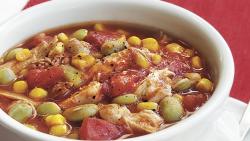
Brunswick Stew (Alabama Stew)
This stew has a lot of names. In South Alabama, it is called 'Camp Stew'. The origin is debated between Virginia and Georgia, but most people believe it to be from Brunswick, GA, hence the (other) name 'Brunswick Stew'. The name 'Alabama Stew' is because today, most of the places you will find it will be in…

Croquettes (Chicken and Ham Croquettes
Croquettes are one of Spain’s most popular tapas, and a staple in most Spanish kitchens, as well. These delicious little bites are everything you look for in a comfort food: crispy, salty, crunchy, and tasty.
Croquettes came to Spain from France, the latter of which use creamy potatoes as a base. While the French use potatoes for…

Jamaican Jerk Chicken
The history of jerk chicken can be traced back to the indigenous Arawak and Taíno tribes of Jamaica, who developed the jerk method of cooking meat over wood fire. The word "jerk" may come from the Spanish word charqui, which refers to dried meat strips similar to jerky. The Taino passed the jerk method down to African slaves, who…
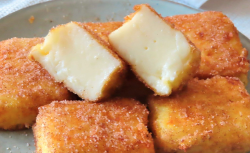
Leche Frita
Leche Frita is a classic dessert from northern Spain, often enjoyed during the week of Easter, today it is made all year round and eaten all over Spain.
It is believed that the origin of Leche Frita stretches back as far as the 16th Century,
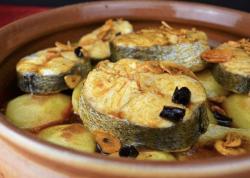
Merluza A La Gallega
Merluza a la gallega is a traditional Spanish fish dish originating from Galicia. The dish is usually made with a combination of hake, garlic, potatoes, paprika, bay leaves, onions, olive oil, salt, and pepper. The pieces of fish, onions, bay leaves, and potatoes are boiled in salted water over low heat.
The garlic is sautéed in…
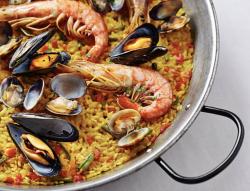
Paella Marinera (Seafood)
Valencia in Eastern Spain is the undisputed home of paella. It is one of the largest natural ports in the Mediterranean and has been one of the most important rice-producing areas in Spain since rice was introduced by the Moors over 1200 years ago. In fact, the Spanish word for rice is ‘arroz’, which is derived from Arabic, not Latin like…

Pan Con Tomate
Pa amb tomàquet (Catalan pronunciation: [ˈpa m tuˈmakət]; lit. 'bread with tomato') is a traditional food of Catalan, Aragonese and Balearic cuisine. Pa amb tomàquet is considered a staple of Catalan cuisine and identity.
It consists of bread, which may or may not be toasted, with tomato rubbed over and seasoned with…

Pao De Queijo
Pão de queijo (pronounced pow-du-KEHjo) is probably Brazil’s most famous food export. Brazilian cheese buns is a small, baked cheese roll or cheese bun, a popular snack and breakfast food in Brazil.
Most countries in South America have their own versions of this snack; the main difference between them in general is the ingredients…

Pavê
This traditional Brazilian dessert is adapted from French cuisine, its name comes from the word 'pavage' which means pavement. This is due to the way the dessert is assembled, with layers of cream and biscuits.
Pave is typically served at family gatherings on Sundays and a popular christmas dessert., and my mother taught me…

Spanish Sangria
Sangria is an alcoholic beverage in Spain and Portugal. A punch, sangria traditionally consists of red wine and chopped fruit, often with other ingredients and spirits.
Sangria recipes vary wildly even within Spain, with many regional distinctions. The base ingredients are always red wine . Traditionally Sangria may be mixed…
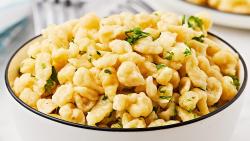
Spätzle (German Dumplings)
Spätzle is a German egg pasta with a chewy, dumpling-like texture. The short "noodles" are usually irregularly shaped and made from a batter of eggs mixed with flour and milk. You can add anything to your spätzle to make a meal!
Growing up in Western PA amongst the "Pennsylvania Dutch," this German staple was…

Tortilla de Patatas (Spanish Tortilla)
Introduced in 1817, folklore says that tortilla de patata was created by general Tomás de Zumalacárregui in order to feed his hungry army, as food supplies were scarce at the time. The key ingredients used in the dish are thinly sliced potatoes and eggs, so it is basically a very thick potato omelette that resembles a frittata when…